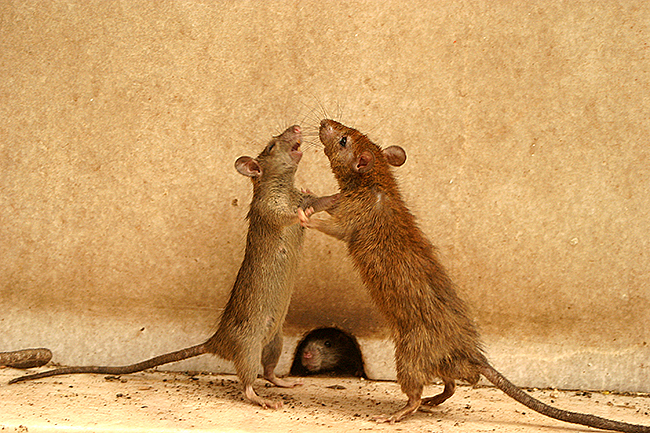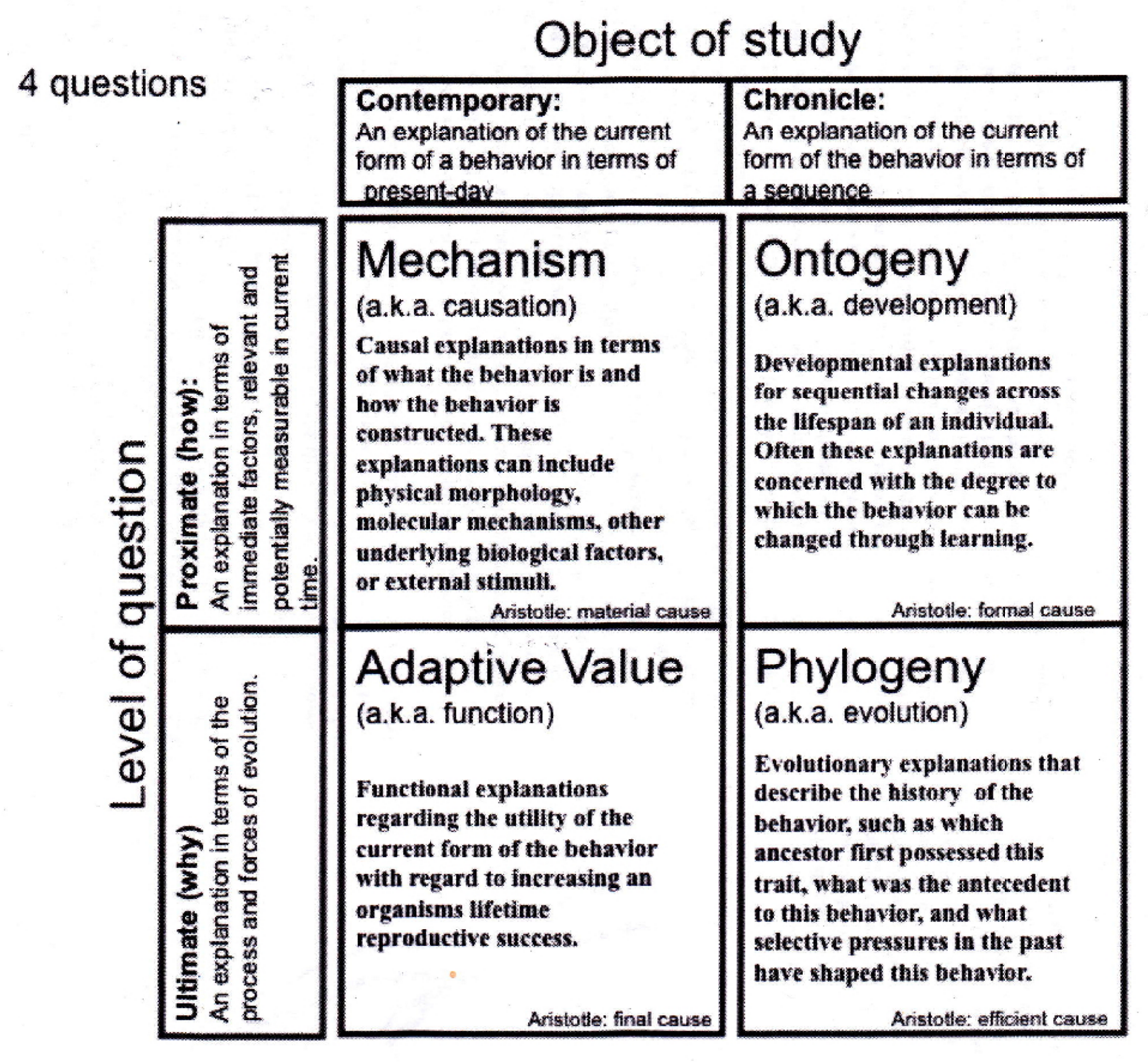Dominance Hierarchies in Male Rattus Norvegicus
James Ryan
Biology 342 Fall 2015

Two male rats duking it out. Photograph reprinted from Julie O'Neill.
Dominance Hierarchies: In General and in Rats
The formation of dominance hierarchies, wherein individuals within a group have a social rank that is either dominant or subordinate to the other group members, is widely prevalent within social species.The creation and maintenance of dominance hierarchies are associated with various behaviors that are conserved across species, such as aggressive behavior by higher-ranked individuals towards lower-ranked individuals (e.g., fighting) as well as and submissive behaviors (e.g., fleeing, cowering) directed to higher-ranked individuals by lower-ranking animals.
The Norwegian rat (Rattus Norvegicus) and its associated subspecies (Sprague-Dawley, Long Evans) exist in social groups in the wild, and social hierarchies of dominant and subordinate rankings manifest themselves both in the wild and in laboratory settings. The purpose of this website is to introduce you to the behavioral ways in which these social hierarchies manifest themselves, and we will further break this behavior down and consider it in different temporal and causal contexts.
Viewing social hierarchies under the lens of Tinbergen's 4 questions
In a seminal 1963 paper, the Dutch ethologist and Nobel laureate Nikolaas Tinbergen proposed a method to understand a behavior by viewing it in light of its causal and temporal context. Popularly known as "Tinbergen's 4 Questions", this classification scheme attempts to understand the proximate and ultimate causes of a behavior, and also considers whether the timeline of the behavior both within the lifetime of the individual organism and over a longer evolutionary timeframe. Although this system of classification is imperfect and overlap between categories can occur, it provides a useful theoretical framework to subdivide and individually consider the various aspect of a behavior. Thus, as we examine the formation and maintenance of dominance hierarches in rats, each facet of this behavior will be considered in the context of its mechanism, adaptive value, ontogeny, and phylogeny.
Diagram representing each of Tinbergen's 4 questions. Figure adapted from Suzy Renn's lecture materials.
